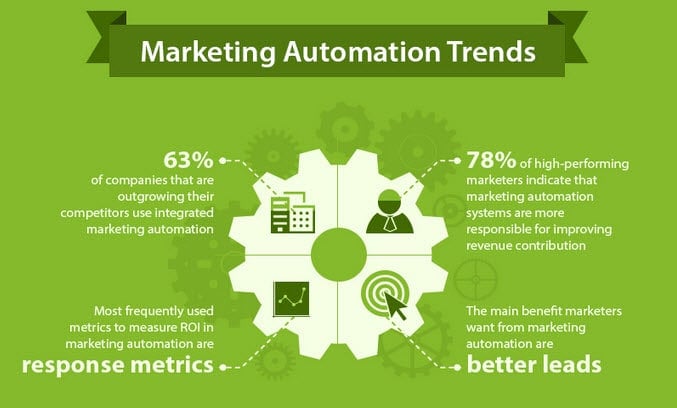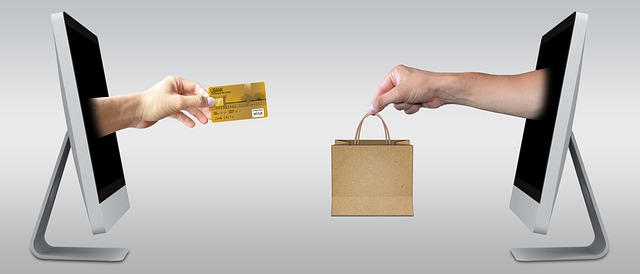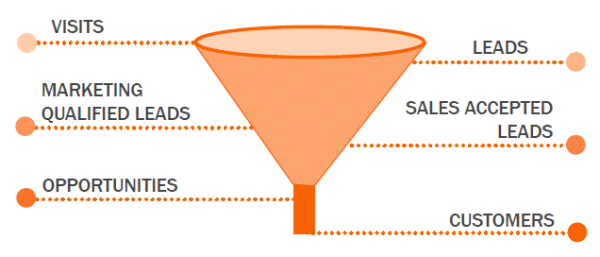






What is marketing automation, you may be wondering? You've probably heard the term before. You may even be using marketing automation within your existing campaigns. Whether it's currently on your radar or not, it's changing the way that brands are marketing, selling to and winning customers.
So what is marketing automation? In its most basic description, it is software or technology that automates jobs or tasks that are repetitive, often tiresome or even formulaic in their approach. Wikipedia states:
"Marketing automation refers to software platforms and technologies designed for marketing departments and organisations to more effectively market on multiple channels online (such as email, social media, websites, etc.) and automate repetitive tasks."
But it's a bit more than that.
Marketing automation allows you to track and mould how a potential buyer interacts with your brand, by collating clicks, visits, opens and actions so you can then deliver marketing messages tailored to a their buying persona without interrupting them. At its core, marketing automation aims to set a consumer on a path to purchase (or action) based on their previous actions.
Marketing Tech Blog has always predicted that content marketing would become more and more reliant on marketing automation. It allows marketers and brands alike to tailor, perfect and become a hell of a lot more efficient at identifying and connecting with prospects. This allows us to move resources away from hollow web traffic unlikely to convert, while focusing on those with a much higher propensity to purchase from your business. Marketing automation helps increase lead quality which ultimately effects your sales.

See the full infographic at Position2
So what is marketing automation able to do for your company? Well, its primary purpose is to help improve a customer’s online experience with your brand, products and services, rather than interrupting (or spamming...) a brokered-in list of names to hit with direct (e)mailing. By building content and workflows relevant to your potential customers, you can work them through a narrative. This helps you bring in the right traffic and target relevant audiences, rather than stacking your analytics with spikes in empty (non-converting) traffic. Inbound, not outbound.
Amazin' automation
Amazon is used by econsultancy.com as an example of how to properly use marketing automation and why it is effective at generating inbound leads for your business.
Amazon uses what’s known as a predictive algorithm. It takes your name when you log in to their service and stores it; this algorithm then monitors what you’re looking at and what you purchase. It then uses this information to show you other products that you might want to buy.

I’m sure you’re thinking now about other companies who use marketing in this way; eBay and ASOS for instance.
However, Twitter has started doing something similar with the ‘while you were away' feature. It collates a bunch of Tweets you’ve missed and presents the ones it thinks you may find most interesting. This isn't done at random. Twitter is making an educated guess, based on your past behaviour and what it thinks you may like to see. Twitter's goal here? To increase your engagement levels.
What to look for in inbound marketing automation
Inbound marketing automation, which focuses on understanding and preempting who your customer is and what their needs and wants are, is arguably the most powerful form of marketing automation. This is the one that consistently delivers the data you need to improve and evolve your marketing channels.
So, what is marketing automation supposed to look like when it's working well? First, you need to work out what you need it to do. Again, econsultancy.com puts this into rather concise words.
You need it to:
- Save you time
- Integrate to your CRM
- Collect and utilise data
- Manage multiple channels
- Personalise to the user
- Increase your sales leads
- Improve the quality of your leads (contact rates and sales)
Find your perfect marketing automation software
There are loads of potential marketing tools worth looking at. As a gold HubSpot partner agency, we highly recommend HubSpot’s marketing automation service, it's an amazing bit of kit. However, other options are out there.
Marketing automation, in the eyes of HubSpot, stretches to "automation beyond email." This means automation not just in your outbound messaging, but equally in the on-sight messaging an pathways presented to the consumer. HubSpot focuses its automation around what your marketing goals are and works to help you achieve them.
What makes HubSpot different (and arguably better) than other marketing automation software (again, we are slightly biased here as we're a HubSpot partner) is that it is a full-funnel marketing platform. It affects your buyer's journey from beginning to end. From the top of the funnel, through to the bottom. TOFU, MOFU, BOFU.

What’s this? Sending mailers or targeting messages to the same people over and over again isn’t effective, but automation allows you to adapt, generating new leads and grow your customers.
So now we've answered the big question, what is marketing automation. This is just a short glimpse into what marketing automation could do for your business though. We think its the best way to hit your target audience and consumers with information you think they’ll like, without clogging up their email accounts with information they may be likely to overlook. By implementing marketing automation, you improve the customer experience and free up time for things like strategy.







